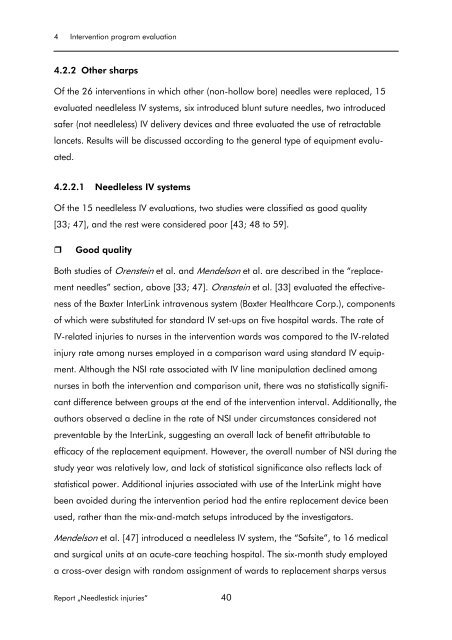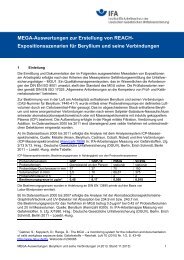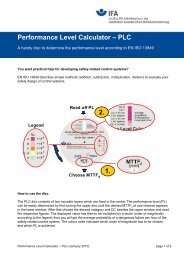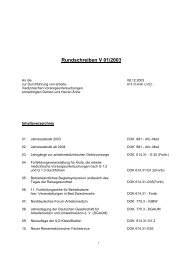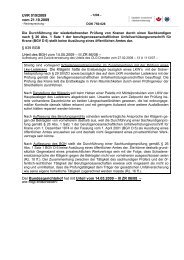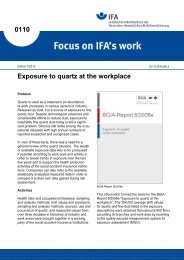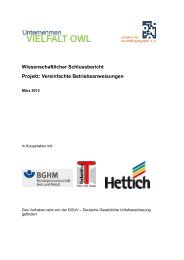Effectiveness of measures to prevent needlestick injuries among ...
Effectiveness of measures to prevent needlestick injuries among ...
Effectiveness of measures to prevent needlestick injuries among ...
Create successful ePaper yourself
Turn your PDF publications into a flip-book with our unique Google optimized e-Paper software.
4 Intervention program evaluation<br />
4.2.2 Other sharps<br />
Of the 26 interventions in which other (non-hollow bore) needles were replaced, 15<br />
evaluated needleless IV systems, six introduced blunt suture needles, two introduced<br />
safer (not needleless) IV delivery devices and three evaluated the use <strong>of</strong> retractable<br />
lancets. Results will be discussed according <strong>to</strong> the general type <strong>of</strong> equipment evalu-<br />
ated.<br />
4.2.2.1 Needleless IV systems<br />
Of the 15 needleless IV evaluations, two studies were classified as good quality<br />
[33; 47], and the rest were considered poor [43; 48 <strong>to</strong> 59].<br />
� Good quality<br />
Both studies <strong>of</strong> Orenstein et al. and Mendelson et al. are described in the “replace-<br />
ment needles” section, above [33; 47]. Orenstein et al. [33] evaluated the effective-<br />
ness <strong>of</strong> the Baxter InterLink intravenous system (Baxter Healthcare Corp.), components<br />
<strong>of</strong> which were substituted for standard IV set-ups on five hospital wards. The rate <strong>of</strong><br />
IV-related <strong>injuries</strong> <strong>to</strong> nurses in the intervention wards was compared <strong>to</strong> the IV-related<br />
injury rate <strong>among</strong> nurses employed in a comparison ward using standard IV equip-<br />
ment. Although the NSI rate associated with IV line manipulation declined <strong>among</strong><br />
nurses in both the intervention and comparison unit, there was no statistically signifi-<br />
cant difference between groups at the end <strong>of</strong> the intervention interval. Additionally, the<br />
authors observed a decline in the rate <strong>of</strong> NSI under circumstances considered not<br />
<strong>prevent</strong>able by the InterLink, suggesting an overall lack <strong>of</strong> benefit attributable <strong>to</strong><br />
efficacy <strong>of</strong> the replacement equipment. However, the overall number <strong>of</strong> NSI during the<br />
study year was relatively low, and lack <strong>of</strong> statistical significance also reflects lack <strong>of</strong><br />
statistical power. Additional <strong>injuries</strong> associated with use <strong>of</strong> the InterLink might have<br />
been avoided during the intervention period had the entire replacement device been<br />
used, rather than the mix-and-match setups introduced by the investiga<strong>to</strong>rs.<br />
Mendelson et al. [47] introduced a needleless IV system, the “Safsite”, <strong>to</strong> 16 medical<br />
and surgical units at an acute-care teaching hospital. The six-month study employed<br />
a cross-over design with random assignment <strong>of</strong> wards <strong>to</strong> replacement sharps versus<br />
Report „Needlestick <strong>injuries</strong>“ 40


